How an Entrepreneur Celebrates Her African Roots at Home and in Business
[This article first appeared on The Roll-out and is authored by Elizabeth Wieck]
Nasozi Kakembo’s Ugandan heritage has always been a guiding force in her identity and home. And nearly ten years ago, she decided to look again to her family’s African roots to start her own business: a textile and decor line called xN Studio.
We’re such fans of Nasozi’s beautiful collection, which features pillows, handwoven baskets, kitchen accessories, and more pieces that help bring time-honored, traditional African designs into modern homes. We recently caught up with her to chat all things business and to peek inside her character-filled D.C.-area home. Keep reading to hear her inspiring story!
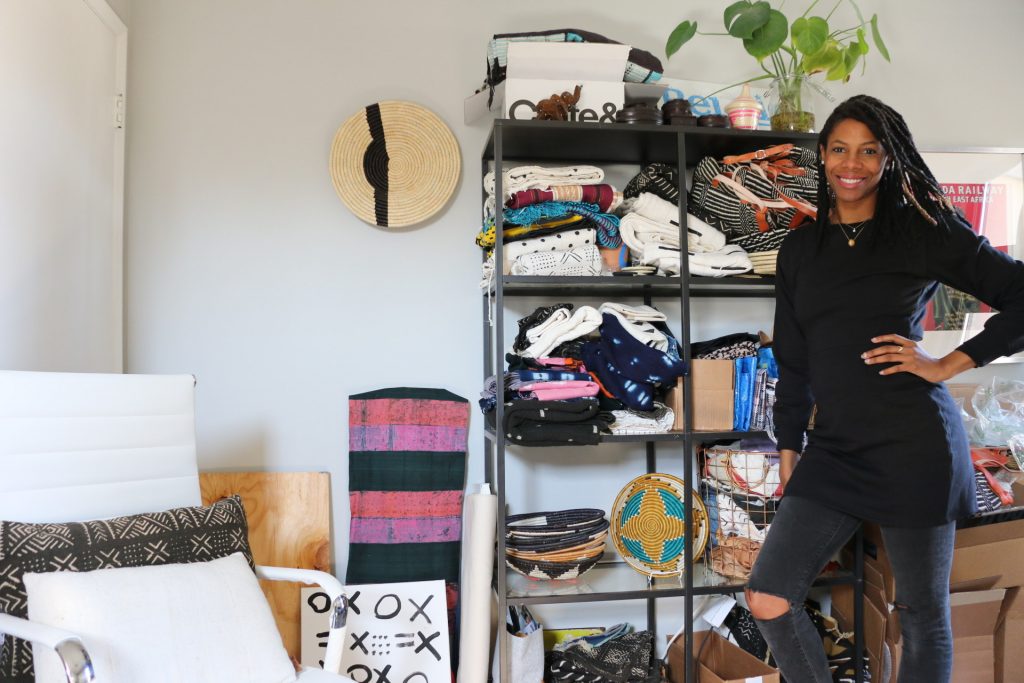
Tell us all about xN Studio! What made you want to start your own brand and get into the design industry?
Nasozi: My personal interests and career have always been oriented toward design. I studied architecture in undergrad, and urban planning and design in graduate school. I didn’t go into either field immediately because I caught the international affairs bug during grad school, and spent the next four years working in human rights philanthropy.
Although I had traveled to Uganda and Morocco long before that, that career path allowed me to see even more parts of the world and of Africa. It was eventually on a work trip to Senegal that sparked my interest to launch xN Studio. I came back from that trip with tons of fabric from le marche (the market), sketched ideas on the plane back, and started xN Studio as a side hustle almost immediately after my return to Brooklyn. That was April 2011!
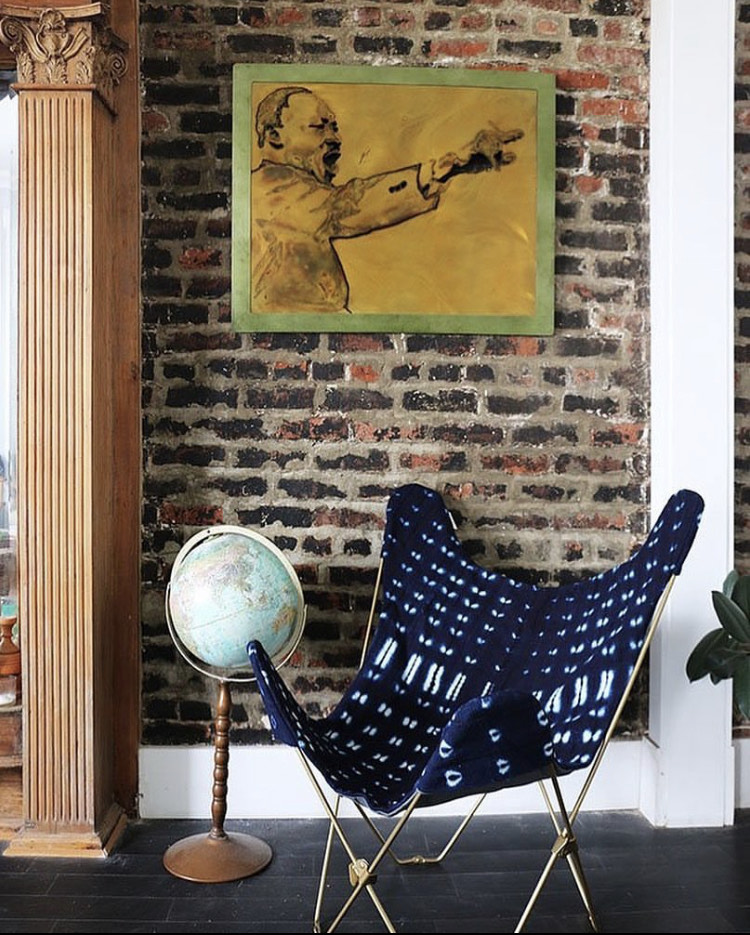
How does your childhood and heritage inspire what you do?
Nasozi: My mother worked in an African art gallery during my entire upbringing, so not only was our home infused with African art and objects, but I also spent a lot of time with her at the gallery in Georgetown, Washington, D.C. as well as African-based cultural events in and around D.C.
My Ugandan heritage is also central to my artistic inspiration. The baskets and other customary objects that we had in our home tied me to my family members in Uganda, many of whom I was not able to meet until my teens, and some whom I never got the chance to meet.
But being surrounded by beautiful objects from Uganda as a child made it feel less far away. It didn’t occur to me until much later when I started my home decor line that these objects would resonate with non-Ugandan people the way they do! So it has been an honor to integrate accents from there into my product offering, and to use those accents as a channel for sharing Ugandan culture and working with expert artisans.
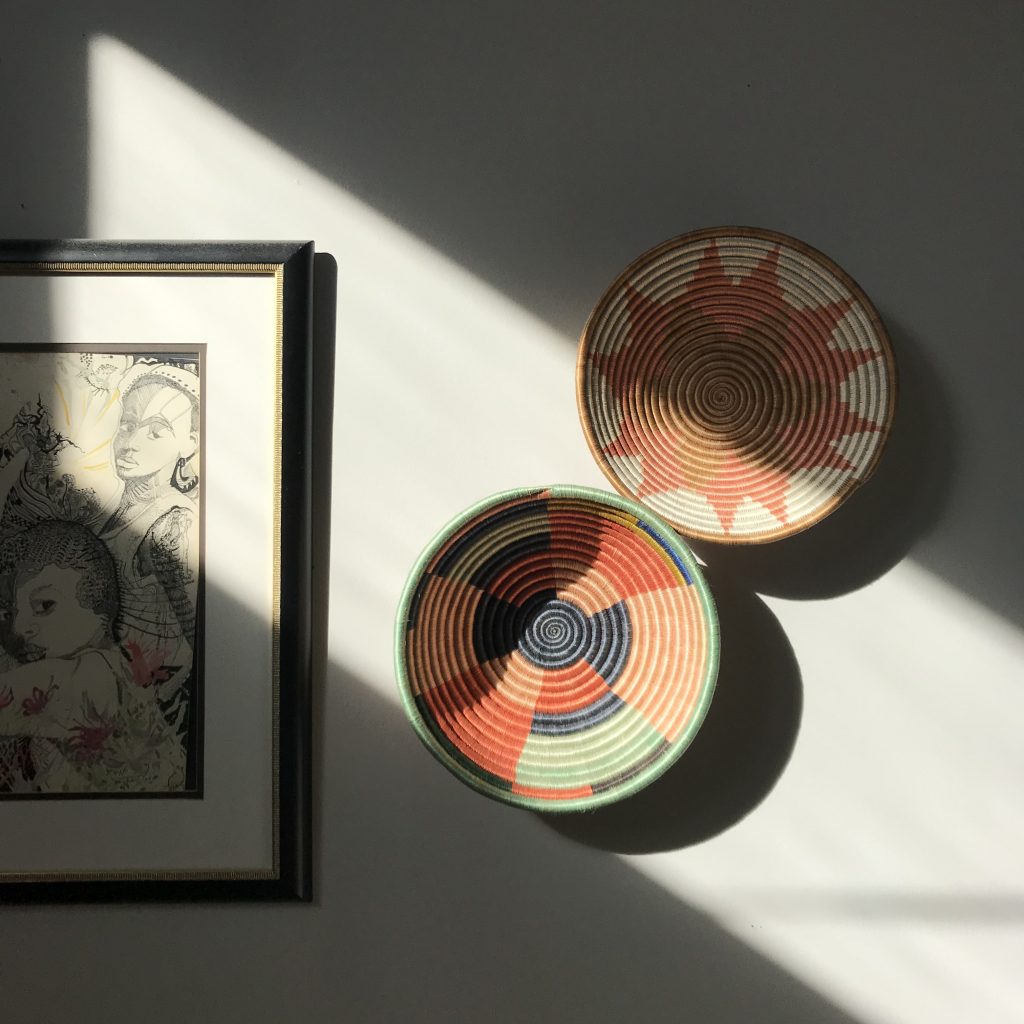
We love all the beautiful African textiles and baskets from your line. How do you decide what to sell, and what’s your process for sourcing these designs?
Nasozi: I decide what to sell based on what speaks to me. I try really hard to determine that before scoping out design trends. I have also always had eclectic taste, so I truly just try to pick things that I personally like. I also find it really helpful to get feedback and even ideas from customers and social media followers.
When I was still based in Brooklyn and selling at a lot of in-person artisan markets, I could always tell which items were the most popular right away—either because they were selling like hotcakes or because of the dialog that being face-to-face with customers lends itself to. But at the end of the day, I do what “feels” right. Sometimes it’s a hit with customers, and sometimes it’s not.
I was one of the first people to introduce mudcloth pillows to the high-end home decor market in 2011. I remember sending my linesheet to stores, and visiting others in person, and being told my work wasn’t a fit. Many of those stores, years later, began selling mudcloth home goods, and the rest is history.
What do you love about being an entrepreneur, and what’s the most rewarding part of your job?
Nasozi: The most rewarding part of my job is realizing that I literally created a livelihood for myself from an idea. What started out as a pure hobby became a full-time job. There have been points in time where I’ve had to—and wanted to—step back from doing this full-time, because entrepreneurship is not “easier” than a regular 9-5 by any means. But as the one who is calling the shots, I get to decide how my day plays out, and integrate the things that I love (like design, social impact, and travel) directly into how I make my living.
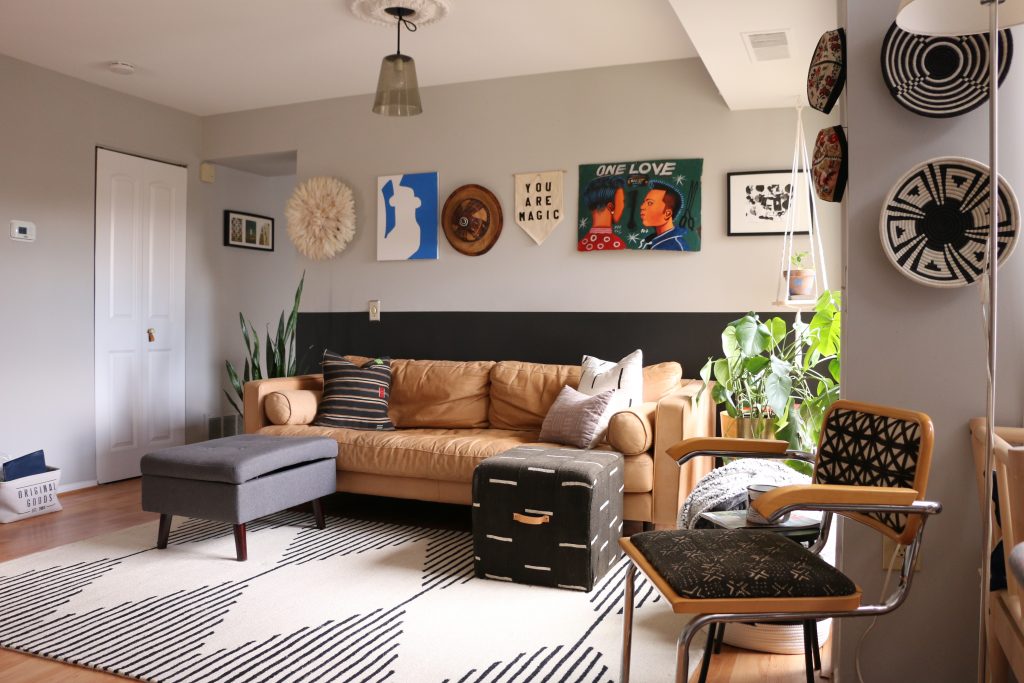
Let’s talk about your home! How would you describe the aesthetic of your space?
Nasozi: I would describe my home’s style as Africa Modern. I think it’s a true blend of traditional and modern African art, as well as my obsession with modern furniture. I studied architecture and art history in undergrad, and the principles of “form follows function” have resonated with me since then.
Living in the confines of Brooklyn apartments for 12 years also got me into the habit of being very intentional about what I bring into my home simply due to the space constraints. That habit stuck with me, and even though I live in a larger home now, I still keep it minimal in terms of furniture and accent pieces. I only recently began to acquire new furniture pieces, 4 years after leaving NYC—including finally investing in some new area rugs!
My family also lived in Germany for 20 years before I was even born, and when they moved to the U.S., they brought all of their German furniture with them. My childhood home was much more “Afro-German” than “African-American” in a way! German was even spoken at home as much as English. I’m obsessed with the Bauhaus school of design, and have integrated it into some of my custom collections.
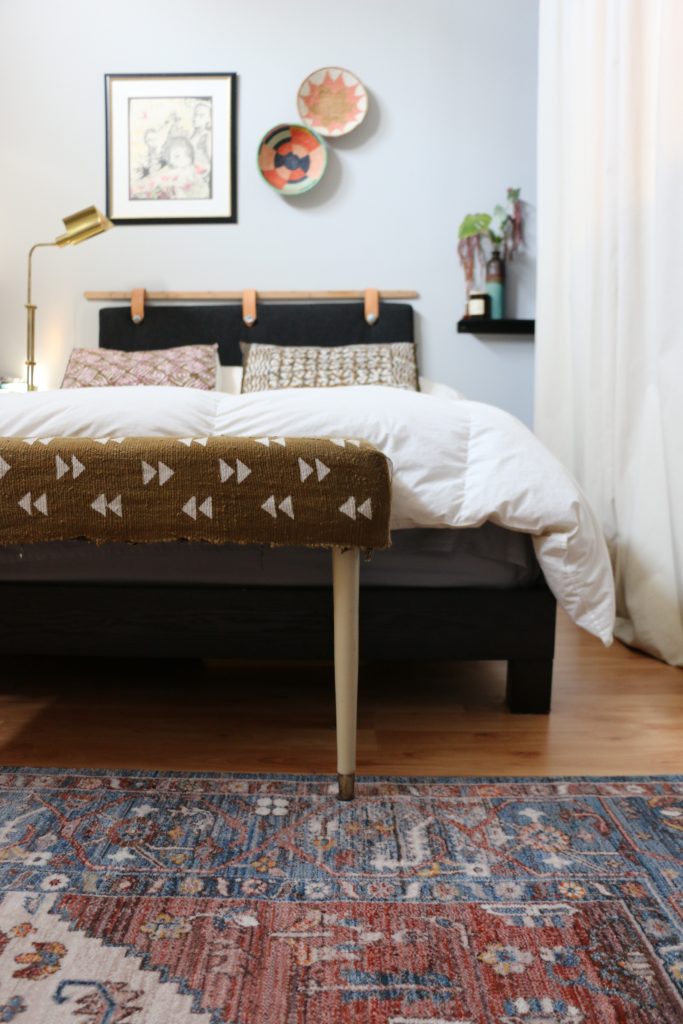
How do you feel when you walk into your home? What do you love about it?
Nasozi: I feel a tremendous sense of pride when I walk into my home. Similar to my business, I also “built” my home, in a sense, from scratch. I purchased our home in 2018 thanks to a homebuyers’ grant program for middle-income families in my community. I had to jump through a lot of hoops and make sure all of my financial ducks were in a row leading up to my grant application, so every time I walk into my home, I’m actually reminded of the perseverance, discipline, and planning that it took to get here.
The pandemic has really made me grateful for the basics, so quite honestly, today, I just love having shelter. The bells and whistles are nice, but I truly love just having a roof over our heads.
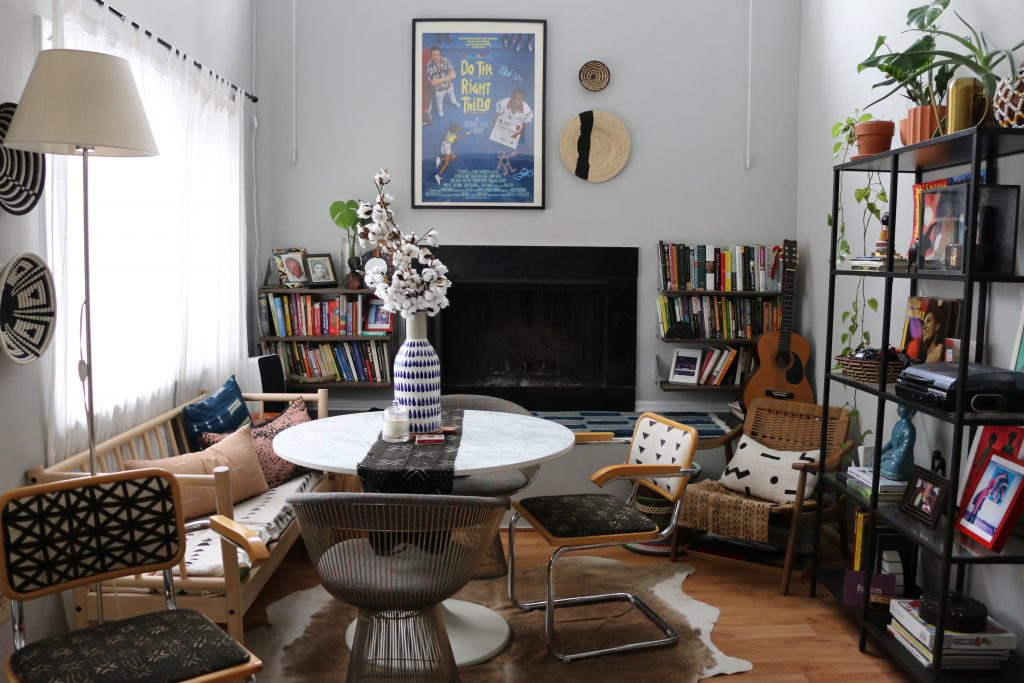
You have so many mementos of African and African-American culture throughout your home. What are some of your favorite pieces?
Nasozi: Spike Lee’s Do the Right Thing is one of my favorite movies, so I have a framed movie poster displayed prominently above my fireplace [see photo above]. I lived in the neighborhood where it was filmed for 12 years (Bed-Stuy in Brooklyn), and even though the film was made in 1989, I experienced many of the issues and themes explored in the film decades later. Bed-Stuy was also where I became a mother, a business owner, and many other things, so it’s quite central to my adulthood story.
I also have a lot of elephants around my home—I love safari animals, but that’s not why. My family’s tribal clan is the Njovu clan, which is the elephant clan, and it is common in Ugandan households to represent your tribe and your clan with artistic objects. In sum, these pieces and more are important for reasons relating to my son than for me, personally. I want him to see our cultures reflected in various ways, and mediums, in a positive and honest light. When he navigates the world on his own, he will already have a sense of his identity and self-worth, much like I did in large part because I was always made to feel proud of my African and African-American ancestry.
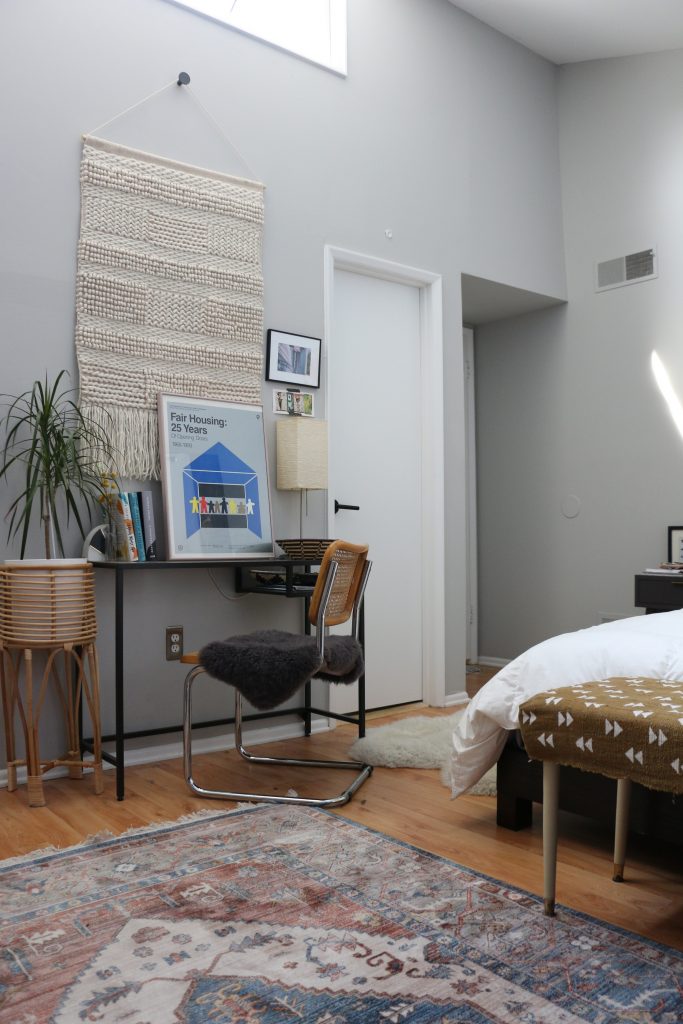
Do you have any tips for people who want to incorporate global or African accents in their spaces, as you have done so thoughtfully?
Nasozi: My first tip relates to the sourcing of the accents than the accents themselves. I’m lucky in that African accents are a part of my home because that’s what I grew up with and it is part of my heritage. But if I didn’t have that connection, I would make sure to understand the full context in which the item was created, its original use, and to try really hard to buy it from somebody who also imparts that knowledge as part of the object’s story.
Ideally, the person I’m buying it from would also have a meaningful and direct connection to the item. Once these aspects are taken into account, incorporating African accents into spaces can be done in much the same way other accents are incorporated into decor. Just follow whatever feeling or approach you use to decorate with other items, and it will all come together in an organic and authentic fashion.
All photos courtesy of Nasozi Kakembo.
